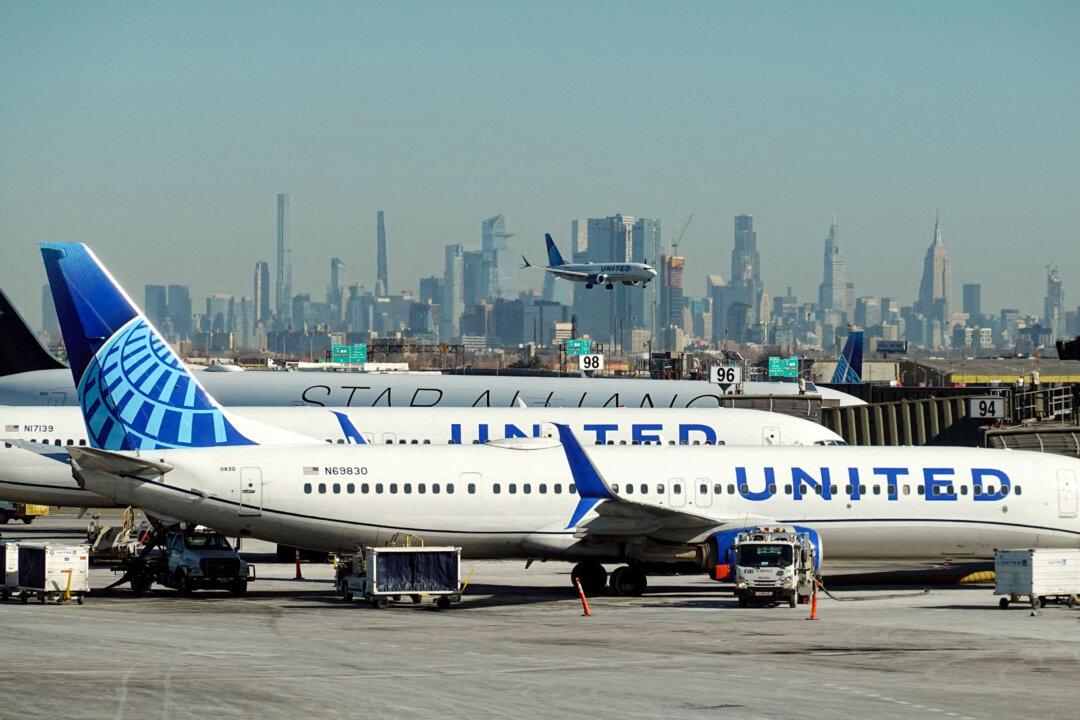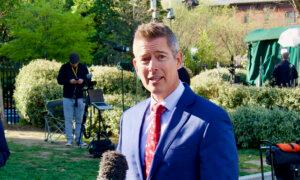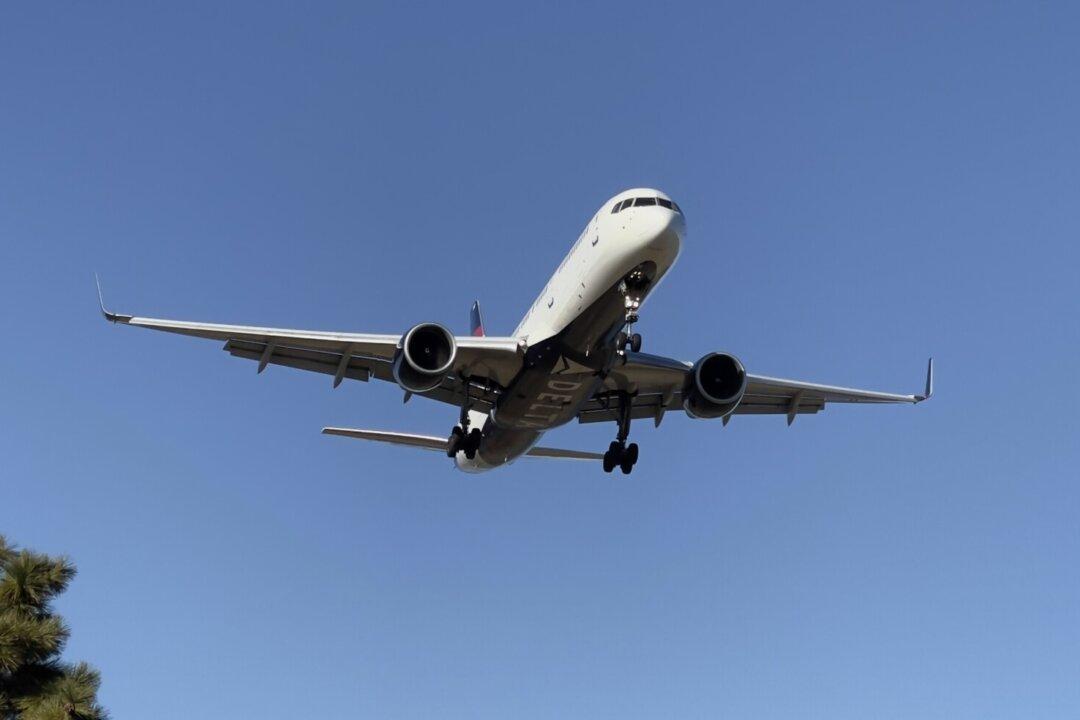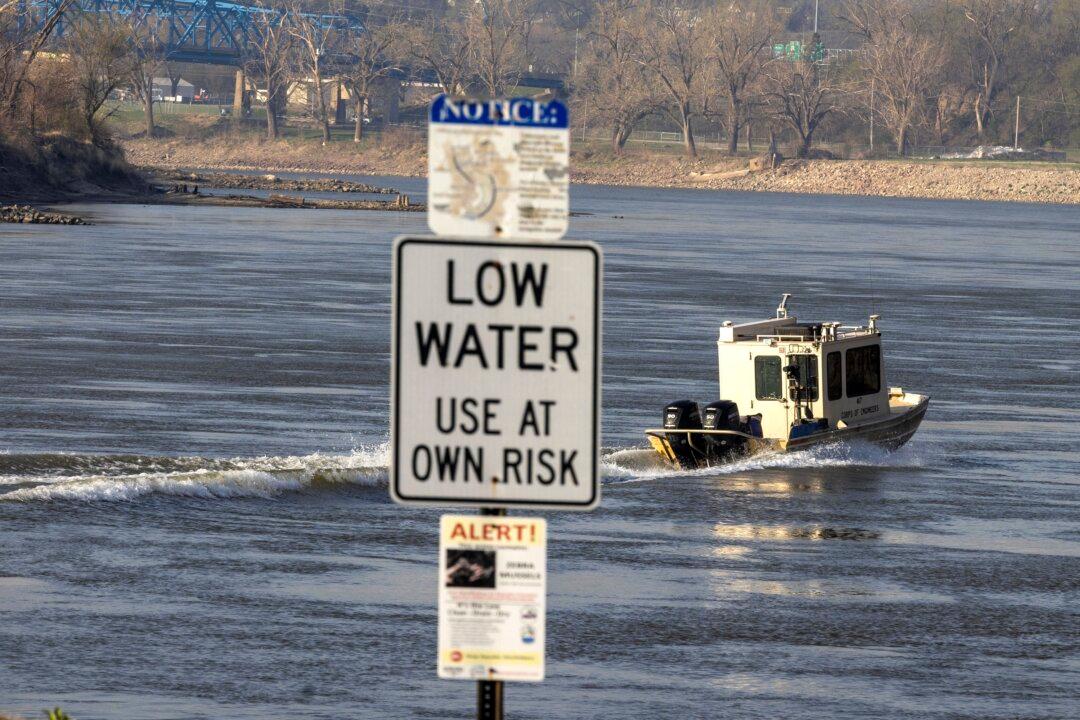United Airlines cut 35 flights a day—10 percent of daily flights—from its Newark Liberty International Airport hub in New Jersey starting May 3.
The decision follows a chaotic week at Newark, where United was forced to delay or divert dozens of flights due to failures in the technology used by FAA air traffic controllers.
“Technology that FAA air traffic controllers rely on to manage the airplanes coming in and out of Newark airport failed—resulting in dozens of diverted flights, hundreds of delayed and canceled flights and worst of all, thousands of customers with disrupted travel plans,” Kirby wrote in an email to customers Friday.
He said the situation was made worse when more than 20 percent of FAA controllers assigned to Newark “walked off the job,” making it more difficult to handle scheduled traffic.
“Keep in mind, this particular air traffic control facility has been chronically understaffed for years and without these controllers, it’s now clear—and the FAA tells us—that Newark airport cannot handle the number of planes that are scheduled to operate there in the weeks and months ahead,” he said.
Neither the union representing air traffic controllers (the National Air Traffic Controller Association), the FAA, nor the Department of Transportation immediately responded to requests for comment.
Last year, the agency relocated control of Newark’s airspace to Philadelphia in an effort to address congestion and staffing shortages in the New York City area.
U.S. Transportation Secretary Sean Duffy acknowledged the growing strain on air traffic infrastructure during a visit Friday to the FAA Terminal Radar Approach Control in Philadelphia.
Acting FAA Administrator Chris Rocheleau said the agency is investigating the recent interruptions at Newark. “We need to make sure the controllers have the proper equipment and that they’re obviously appropriately staffed,” he said on May 1.
Major U.S. airlines have asked the FAA to extend waivers on minimum flight requirements at congested New York City-area airports through October 2027, citing ongoing staffing shortages.
These waivers allow airlines to retain their takeoff and landing slots even if they do not use them at least 80 percent of the time.
United has previously reduced its Newark schedule due to FAA staffing issues. In November 2024, the airline said it was forced to cut traffic at the airport on a dozen days, disrupting travel for more than 343,000 customers.
Kirby said that United has been urging the government for years to address the chronic issues at Newark. “These challenges are not new to Newark. United has been urging the U.S. government for years to use its authority to effectively limit the number of flights to what the airport can realistically handle. Past failure to make those changes had led to the circumstances that United and, most importantly, our customers now face,” he wrote.
He said he supports the new administration’s proposal for a “large, systemwide investment in FAA technology, infrastructure and staffing,” but called for immediate action at Newark, including designating it as a slot-controlled, Level 3 airport.
“By using the authority it has, the FAA can help Newark fulfill its incredible potential to be a safe, reliable and efficient gateway to the world for the American traveling public,” Kirby said.
United’s latest cuts will take effect as the airline seeks to minimize disruption for travelers amid what it describes as a “near-term structural FAA staffing issue” with no immediate resolution in sight.







